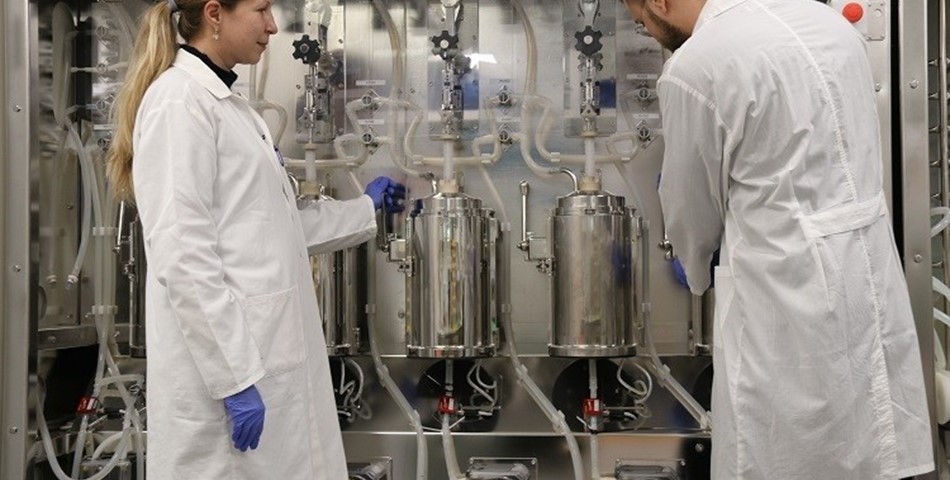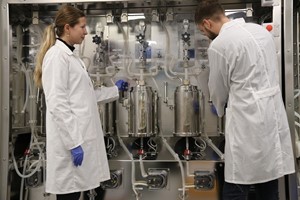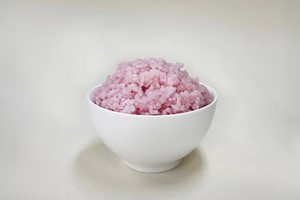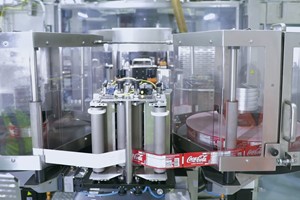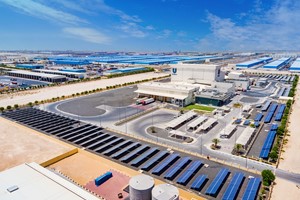In the quest for sustainable and ethical alternatives to traditional meat production, cultured meat has emerged as a promising solution, poised to revolutionize the food industry. Central to this innovative approach are bioreactors—sophisticated vessels that provide a meticulously controlled environment for the cultivation and proliferation of animal cells.
Controlled Environment for Optimal Growth: Bioreactors serve as the cornerstone of cultured meat production by offering a sterile and precisely controlled environment conducive to cell growth and differentiation. Scientists wield control over critical factors such as temperature, pH levels, oxygen concentration, and nutrient composition, fine-tuning these parameters to optimize cell proliferation and guide cellular differentiation. This meticulous orchestration is pivotal in steering the development of animal cells towards specific muscle or fat cell lineages, ultimately defining the texture and flavor profile of the cultured meat product.
Enabling Large-Scale Production: The scalability of cultured meat production hinges on the capacity of bioreactors to support the expansive proliferation of animal cells. These vessels facilitate the cultivation of vast cell populations, laying the foundation for commercially viable production levels necessary to meet consumer demand. As the cultured meat industry continues to gain traction, bioreactors emerge as indispensable tools for achieving economies of scale and driving down production costs, thereby enhancing the accessibility of these sustainable protein sources.
Diverse Bioreactor Designs: There is no one-size-fits-all solution when it comes to bioreactor design for cultured meat production. Instead, researchers must carefully consider factors such as cell type, desired product form (e.g., ground meat, steak), and cost-effectiveness when selecting the appropriate bioreactor configuration. Among the array of designs available, two prominent types stand out:
- Stirred-Tank Reactors: Widely utilized for large-scale cell cultures, stirred-tank reactors feature a continuously mixed environment that ensures uniform nutrient distribution and oxygen supply to the growing cell population. This design's efficiency and scalability make it a preferred choice for mass production scenarios.
- Perfusion Bioreactors: Engineered to deliver a constant flow of fresh nutrients while removing waste products, perfusion bioreactors offer an environment conducive to sustained cell growth and viability. The seamless exchange of media in these systems promotes enhanced nutrient uptake and waste removal, fostering efficient cell proliferation and differentiation.
The Cultured Meat Bioprocess Unveiled: The journey from cell collection to the final harvested product in cultured meat production unfolds through a meticulously orchestrated bioprocess:
- Cell Collection: A minute sample of muscle stem cells is procured from an animal via a biopsy, serving as the foundation for cultured meat production.
- Cell Expansion: These harvested cells are introduced into the bioreactor environment, where they undergo rapid multiplication under precisely controlled conditions, proliferating into a burgeoning cell population.
- Differentiation: Strategic introduction of signaling molecules or growth factors prompts the cells to embark on a journey of differentiation, guiding their transformation into mature muscle or fat cells—key constituents of the cultured meat product.
- Tissue Formation: Depending on the desired final product attributes, additional techniques such as scaffold utilization may be employed to facilitate the organization and structuring of cells, imparting desired texture and mouthfeel characteristics.
- Harvesting: Once the cultured meat attains the desired size, texture, and flavor profile, it is meticulously harvested from the bioreactor environment, ready to be processed into a delectable culinary delight.
Challenges and Future Directions: Despite the remarkable strides made in cultured meat production, several challenges persist on the path to widespread adoption and commercialization:
- Cost-effective Media: The nutrient broth—or media—utilized to nourish and sustain the growing cell population can impose significant financial burdens due to its high cost. Ongoing research endeavors aim to devise more affordable and sustainable media formulations, enhancing the economic viability of cultured meat production.
- Scalability: Scaling up production to meet burgeoning consumer demand necessitates the optimization of bioreactor designs and operational processes for large-scale manufacturing. Addressing scalability challenges is paramount to unlocking the full potential of cultured meat as a sustainable protein source for the masses.
As the cultured meat industry continues to evolve, bioreactors will undoubtedly remain at the forefront of innovation, driving efficiency, sustainability, and scalability within this transformative field. Through concerted research efforts and technological advancements, the vision of a future where cultured meat serves as a mainstream, sustainable protein source inches ever closer to realization.
foodHQ Staff




